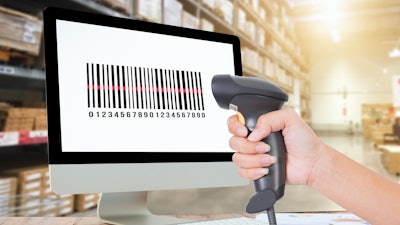
The beginning of 2020 marked the end of support for the Windows Embedded Handheld/Windows CE platform. This shift left many organizations open to risk with outdated technology, creating an urgency around implementing Android mobile computing for the enterprise. Coupled with the COVID-19 pandemic, navigating these disruptions may seem overwhelming, but the stress that the supply chain has endured this year makes it a particularly crucial time for businesses to embrace modernization, make high-value changes and build a more sustainable future.
In 2019, Barcoding, Inc., launched a study on how industry leaders are navigating challenges and technology changes in the supply chain. By discovering firsthand the pain points in migrating to Android, we were able to develop a roadmap for companies looking to optimize value in leveraging new mobile technology.
Modernization IS an exciting opportunity for industry leaders. Here are some key takeaways for supply chain managers looking to future proof their supply chains:
Digital maturity is a competitive advantage. Our research revealed that many organizations are hesitant to make the transition from Windows Embedded Handheld to Android for a variety of reasons, including budget concerns, time and integration to back-end systems.
However, with modern enterprise mobility management tools, technical support for Android products is more efficient and effective than Windows Embedded Handheld. When technology stops, the work stops — often setting an operation back hours, if not days, and costing precious dollars in the process. The transition to Android minimizes this lag time for companies, increasing productivity and results.
Prioritize user adoption, A growth mindset at the individual AND company level is vital. New technology always has a learning curve, no matter what level of experience your end users have. Twenty percent of industry professionals surveyed cited user training as a barrier to new device implementation and 13 percent cited user adoption and buy-in. At the same time, 75 percent believed they could achieve better user adoption and results by investing in device and software training for users.
Training a diverse set of users and getting them involved in new technology adoption is critical to success. Put your users first and prioritize a thoughtful adoption plan, whether that includes instructor-led workshops and training, eLearning, videos and prompts embedded into the device and its applications, or augmented virtual reality training. Change is bound to create anxiety in employees, but the more you prioritize consistent, transparent communication, the smoother the transition will be for everyone.
Explore all possible functions and assess the value. With easy-access to download and implement applications, Android’s store offers a wide range of software in a user-friendly interface. The multi-use functionality of the Android system allows one device to act as a scanner, a radio, and a key-code, instead of requiring separate devices for each function. Ultimately, this maximizes efficiency and reduces costs.
Much like their mainstream counterparts, enterprise mobile devices were manufactured with the users’ needs in mind, and as a result, they are inherently easier to deploy. Their touch screens, applications, and general functionality aren’t far off from the devices employees are likely using in their personal lives. This will optimize resources and facilitate innovation — because the technology is more intuitive, users can more easily identify new ways to use the devices’ various functionalities and improve the supply chain process, instead of hemorrhaging time trying to make outdated devices work.
A common misconception among supply chain professionals is that the modernization process requires a complete overhaul.
While it’s important to have a vision, change can be incremental — you can change out devices as they break and slowly in phase new technology, instead of implementing an entirely new system at warp speed. This also creates space for team members to provide feedback and buy in to the new system, instead of feeling overwhelmed, not to mention time for error, testing and improvements.
Investing in modern infrastructure now will strengthen the supply chain and empower companies to innovate and succeed in the future.
For the complete survey results and roadmap to embracing technological change and navigating disruption, visit: learn.barcoding.com/report. Jody Costa is the Vice President of Marketing at Barcoding, Inc.


















